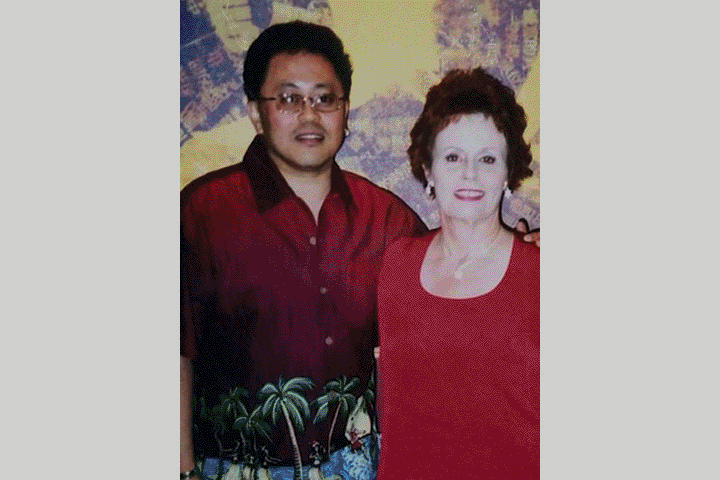New Pain Control Technology for Locally Advanced Pancreatic Cancer

For cancer patients, pain adds another level of difficulty to an already difficult health journey.
The good news is that cancer pain can be controlled, and quite effectively. Still, researchers are continually looking for new ways to help mitigate cancer pain.
In January 2025, Let’s Win reported that Tumor Treating Fields (TTFields), in combination with chemotherapy, showed promise in improving pain control as well as overall survival in patients with locally advanced pancreatic cancer. According to results of the PANOVA-3 trial, presented at the 2025 conferences of the American Society of Clinical Oncology (ASCO) and European Society of Medical Oncology (ESMO), TTFields can significantly extend pain-free survival and improve one-year survival rates in this patient population.
Pain Hurts Everything
Pain, whether from the tumor, treatment, or advancing disease, can adversely affect pancreatic cancer patients. “Patients with pancreatic cancer visit emergency rooms and clinics with weight loss, fatigue, jaundice due to the liver being affected, and most importantly pain,” explains Hani Babiker, M.D., a hepatopancreaticobiliary leader at the Mayo Clinic Comprehensive Cancer Center in Jacksonville, Florida, and a principal investigator on the PANOVA-3 trial. “Pain can affect patients’ quality of life significantly, leading to decreased mobility, decreased appetite, and low mood.”
A patient’s prognosis can also be affected. “Lack of appropriate pain control can affect prognosis adversely as patients tend to eat less due to fear of worsening or inciting pain,” he adds. “Patients eventually develop a sense of helplessness and hopelessness which can affect their outlook towards fighting this disease.”
Pain in pancreatic cancer is most often managed with over-the-counter pain medications such as acetaminophen, prescription narcotics, and, in some cases, with procedures like a celiac plexus nerve block. Drug treatment includes potential side effects such as constipation, which can be severe, drowsiness, and fatigue. To help manage pain, patients should with treated by a multidisciplinary team and from a “holistic” perspective, Babiker explains.
TTFields and Pain Control
Data presented at the 2025 ASCO Annual Meeting (in Chicago, Illinois, May 29 to June 2) from the PANOVA-3 trial of TTFields show a clinically meaningful and statistically significant improvement in overall survival as well as an extension in the duration of time before pain progressed for people with locally advanced pancreatic cancer.
Although almost 30 percent of patients dropped out of the trial because of disease progression, analysis of the remaining patients who were treated with TTFields therapy along with gemcitabine and nab-paclitaxel had a median overall survival of 16.2 months, compared to 14.2 months for patients treated with gemcitabine and nab-paclitaxel alone. The TTFields-treated patients also showed improvement in several secondary endpoints, including the one-year survival rate and pain-free survival.
The one-year survival rate showed a statistically significant improvement in the TTFields/gemcitabine/nab-paclitaxel treated group with 68.1 percent compared to 60.2 percent of those who received gemcitabine and nab-paclitaxel alone.
Patients treated with TTFields/gemcitabine/nab-paclitaxel had a median pain-free survival of 15.2 months, compared to a median 9.1 months in the group treated with gemcitabine and nab-paclitaxel alone. This is a statistically significant 6.1-month extension in pain-free survival. Pain-free survival was defined as the time from baseline until an increase of 20 or more points was reported by patients on a visual scale for pain or until death.
Quality of life was also measured as a secondary endpoint. Analyses were performed for all patients using the European Organisation for Research and Treatment of Cancer Quality of Life questionnaire (EORTC QLQ-C30) with the pancreatic cancer specific PAN26 addendum. Deterioration-free survival in global health status, pain, and digestive problems were significantly improved in patients receiving TTFields therapy along with gemcitabine and nab-paclitaxel compared to the gemcitabine and nab-paclitaxel alone group.
TTFields therapy was well-tolerated, no new safety signals were observed, and safety was consistent with prior clinical studies. Mild to moderate skin adverse events were reported.
“We were very happy when the data was reported as it was the first phase III study to show a benefit in survival in patients with locally advanced pancreatic cancer,” Babiker says. “Survival was the primary endpoint. Moreover, we were even more pleased when the data showed a significant improvement [with the use] of TTFields in pain-free survival and in quality of life.” Just how TTFields mitigates pain is potentially related to the direct effect of the therapy on the cancer, which can infiltrate the nerves causing pain. “In the future, more studies to see how TTFields can affect nerves involved in pain would be interesting,” he adds.
Further analysis presented at the 2025 ESMO Gastrointestinal Cancers Congress (held in Barcelona, Spain, in early July 2025) showed that TTFields given in conjunction with gemcitabine plus nab-paclitaxel led to an improvement in overall health status and significantly delayed time to the worsening of pain and opioid use compared with gemcitabine plus nab-paclitaxel alone in patients with locally advanced pancreatic cancer.
According to the analysis, times to worsening of pain was 10.1 months versus 7.4 months, and pancreatic pain was 14.7 months versus 10.2 months. These results showed that pain was controlled significantly longer with TTFields and chemotherapy versus chemotherapy alone, with quality of life scores increasing by two months of treatment and maintained to 26 months. There was no difference in insomnia and fatigue. In a post-hoc analysis, time to the use of meaningful pain medication and opioids were significantly longer with TTFields and chemotherapy, median 6.9 months versus 4.9 months and 7.1 months versus 5.4 months, respectively. Digestive problems, with the exception of indigestion, also favored TTFields, according to the researchers.
“I am very excited that we are seeing some positive and promising advances to fight pancreatic cancer such as Tumor Treating Fields and the emergence of pan-RAS (ON) inhibitors such daraxonrasib,” Babiker says. “The incidence of pancreatic cancer is increasing and we are seeing the disease in younger patients when compared to when I started my career in oncology. I am optimistic that with more basic research and clinical trials we will push the needle forward in this disease.”






